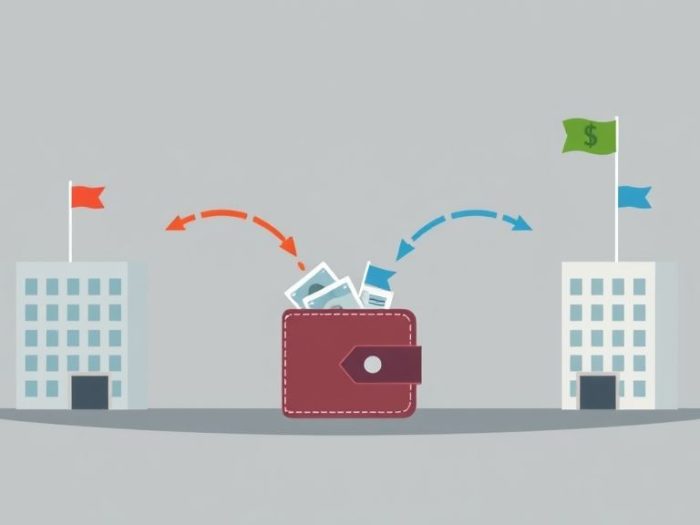Exchange-Traded Funds (ETFs) and Exchange-Traded Notes (ETNs) are both investment products
that trade on stock exchanges, but they have distinct structures and tax implications.
Understanding these differences is crucial for investors seeking tax efficiency. This article
explores the tax differences between ETFs and ETNs.
Understanding ETFs (Exchange-Traded Funds)
ETFs are investment funds that hold a basket of underlying assets, such as stocks, bonds, or
commodities. They are designed to track the performance of a specific index or sector.
Understanding ETNs (Exchange-Traded Notes)
ETNs are unsecured debt securities issued by an institution, promising to pay the return of an
index or benchmark. Unlike ETFs, ETNs do not own the underlying assets.
Key Tax Differences Between ETFs and ETNs
The primary tax differences lie in how capital gains are treated.
1. Capital Gains Distributions
-
ETFs: ETFs can generate capital gains distributions, which are passed on to
shareholders. These distributions occur when the ETF sells underlying holdings at a profit. - ETNs: ETNs generally do not generate capital gains distributions.
2. Taxation of Gains and Losses
- ETFs: When you sell ETF shares, you realize a capital gain or loss.
- ETNs: When you sell or mature an ETN, your gain or loss is generally treated as a capital gain or loss.
3. Holding Period
-
ETFs: The holding period for determining short-term or long-term capital
gains is based on how long you held the ETF shares. - ETNs: The holding period is also based on how long you held the ETN.
Why These Differences Matter
-
Tax Deferral: ETNs can offer greater tax deferral, as you generally don’t pay
taxes until you sell or the ETN matures. -
Income vs. Capital Gains: ETF distributions may be taxed as ordinary income,
while capital gains are typically taxed at lower rates. -
Complexity: The tax treatment of ETNs can be more complex and may vary depending on
the specific ETN.
Examples
- ETF Example: You buy an S&P 500 ETF and receive a capital gains distribution. You’ll owe taxes on that distribution in the current year.
- ETN Example: You buy an ETN that tracks a commodity index. You hold it for several years and then sell it for a profit. You’ll owe capital gains taxes on the profit when you sell.
Important Considerations
- Investment Goals: Tax efficiency is important, but it shouldn’t be the sole driver of investment decisions.
- Investment Strategy: Consider how ETFs and ETNs fit into your overall portfolio and trading strategy.
- Risk Tolerance: ETNs carry issuer risk (the risk that the issuing institution defaults).
- Professional Advice: Consult with a tax professional or financial advisor for personalized guidance.
Conclusion
Understanding the tax differences between ETFs and ETNs is crucial for tax-efficient investing.
ETNs can offer greater tax deferral, while ETFs may generate more predictable tax consequences.
Carefully consider your investment goals and tax situation to make informed decisions.
Related Keywords
ETF taxes, ETN taxes, ETF vs. ETN, tax-efficient investing, capital gains tax, tax deferral,
investment taxes, tax planning, tax efficiency, exchange-traded funds, exchange-traded notes.
Frequently Asked Questions (FAQ)
1. What is an ETF (Exchange-Traded Fund)?
An ETF is an investment fund that holds a basket of underlying assets, such as
stocks, bonds, or commodities, and trades on stock exchanges.
2. What is an ETN (Exchange-Traded Note)?
An ETN is an unsecured debt security that promises to pay the return of an
index or benchmark but does not own the underlying assets.
3. What is the main tax difference between ETFs and ETNs?
The main tax difference lies in how capital gains are treated, particularly with
capital gains distributions.
4. What are capital gains distributions from ETFs?
Capital gains distributions occur when an ETF sells underlying holdings at a
profit, and these gains are passed on to shareholders.
5. Do ETNs typically generate capital gains distributions?
No, ETNs generally do not generate capital gains distributions.
6. How are gains and losses taxed when you sell ETF shares?
When you sell ETF shares, you realize a capital gain or loss, which is taxed
accordingly.
7. How are gains and losses taxed when an ETN matures or is sold?
Gains or losses from selling or maturing an ETN are generally treated as capital
gains or losses.
8. How does the holding period affect the taxation of ETFs and ETNs?
The holding period (how long you owned the investment) determines whether gains
are taxed as short-term or long-term capital gains for both ETFs and ETNs.
9. Which offers greater tax deferral, ETFs or ETNs?
ETNs can offer greater tax deferral, as you generally don’t pay taxes until you
sell or the ETN matures.
10. Should tax efficiency be the only factor when choosing between ETFs and ETNs?
No, tax efficiency is important, but you should also consider your investment
goals, risk tolerance, and the specific characteristics of each product.



